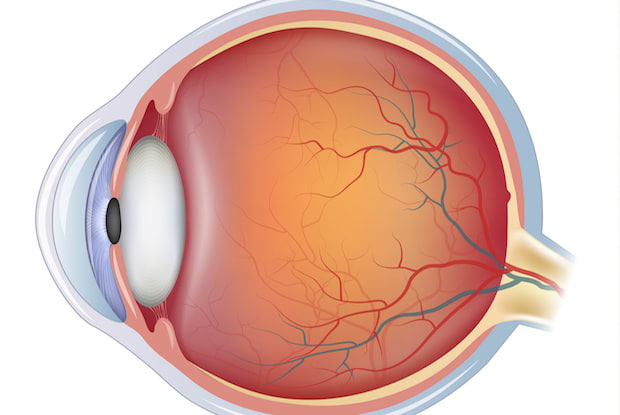Table of Contents
I. Understanding How the Eye Works
II. Risk Factors for Eye Problems
Understanding How the Eye Works
The eye is made up of a system of complicated structures that allow us to see and experience the world around us. When one of these structures become irritated or damaged, several complications can occur. But before diving into these disorders, it is helpful to understand how the eye works.
There are many tiny eye components, but the largest parts include the cornea, retina, optic nerve, focal point, lens, and iris. The cornea is the clear covering of the eye that admits light and keeps particles out of the eye. The pupil is the adjustable opening that controls how much light passes into the lens. Once this light hits the retina at the back of the eye, the image we are receiving is transformed into electrical impulses carried by the optic nerve to the brain.
Unlike any other part of the body, the eye does not recover well from injury. Our elbows and knees can take scrapes and cuts, but this is not the case for the cornea. If the cornea sustains a scratch or cut, you may experience impaired vision. The cornea is essential to the eye's function, and if it becomes clouded or scarred, the eye may be irreparably damaged even if the rest of the eye works perfectly fine. [1]
Many things may go wrong with the eyes over time, and it is essential to do everything you can to maintain proper eye health. The eyes are sensitive to irritants and can become easily inflamed due to seasonal allergies. If your eyes are easily inflamed or are experiencing glaucoma and incorrect eye pressure, you may be prescribed certain medications. These eye drops can include Patanol (olopatadine), Zaditor (ketotifen) Azopt (brinzolamide), and Lotemax (loteprednol). Read on to learn more about the most signs and symptoms of common eye disorders. Most people experience some eye problems in their life. The majority of eye problems are minor and will likely go away on their own, but others may hang around and lead to vision problems. Some common risk factors for eye conditions can include: Smoking: If you are a frequent smoker, the chemicals in smoke can interfere with the protective antioxidative nutrients of the eye. The chemicals may penetrate the eye and contribute to macular degeneration, which is a serious eye condition. Smoking also increases your risk of glaucoma, cataracts, and diabetic retinopathy. [2] Diabetes: People with diabetes are at an increased risk for eye disease. Diabetes typically does not cause eye problems quickly but over a long period. If blood glucose levels remain high for long periods, the eye's tiny blood vessels can be affected. These vessels may leak fluid or swell and lead to increased eye pressure and vision problems. [3] Eye Strain: Today, most jobs require staring at computer screens for countless hours a day. This can result in eye strain, affecting 50 to 90 percent of people with computer screen jobs. If you already have eye problems, prolonged computer exposure can make your eyes worse. Over time, your ability to focus on near and far objects will start to decline. [4] Age: Eye diseases and eye problems become more prevalent as we age. As you get older, the eyes weaken, and eyesight worsens. To prevent serious age-related eye problems, it is essential to regularly see your family physician ensure you do not experience glaucoma, cataracts, or macular degeneration. [5] Every eye problem may have its unique symptoms, but generally, a few symptoms are present in the majority of eye conditions. You may have eye or vision problems if you experience: Age-related eye problems: As mentioned earlier, lots of bodily processes start to malfunction as we age. The eyes are often one of the more severely affected parts of the aging process. Macular degeneration, glaucoma, and cataracts are three conditions that can occur with age. Conjunctivitis: Conjunctivitis, or "pink eye,” is a common condition characterized by the inflammation of the conjunctiva. This area is the clear tissue that lies over the white part of the eye and lines the eyelid. It is most common in children and spreads easily. Bacteria, viruses, and allergens cause it. Eye damage isn't common, but if long-term vision problems occur, talk to your doctor. [8] Eye Allergies: Many allergies can cause eye problems. If you are experiencing seasonal allergies, the eyes are often affected along with the nose and throat. The histamines produced when exposed to pollen and other allergens can lead to eye blurriness and irritation. [9] There are several medications available for eye problems. If you are experiencing high pressure inside the eye because of glaucoma or other eye condition, you will likely be prescribed Azopt (brinzolamide) eye drops. High pressure inside the eye is a serious condition, so those medications are not prescribed as often as allergy-related disorders. [10] Medications like Patanol (olopatadine), Zaditor (ketotifen), and Lotemax (loteprednol) eye drops are available for general eye inflammation. All three of these drops reduce redness and itching, which can be caused by several eye conditions. Lotemax eye drops contain corticosteroids to prevent inflammation. Eye redness is typically not dangerous, but you may require more aggressive forms of treatments in the case of glaucoma or macular degeneration. Your doctor will determine the correct form of treatment for you. [11] The content in this article is intended for informational purposes only. This website does not provide medical advice. In all circumstances, you should always seek the advice of your physician and/or other qualified health professionals(s) for drug, medical condition, or treatment advice. The content provided on this website is not a substitute for professional medical advice, diagnosis, or treatment.
Risk Factors for Eye Problems

Symptoms of Eye Problems
Common Eye Disorders

Treatments
